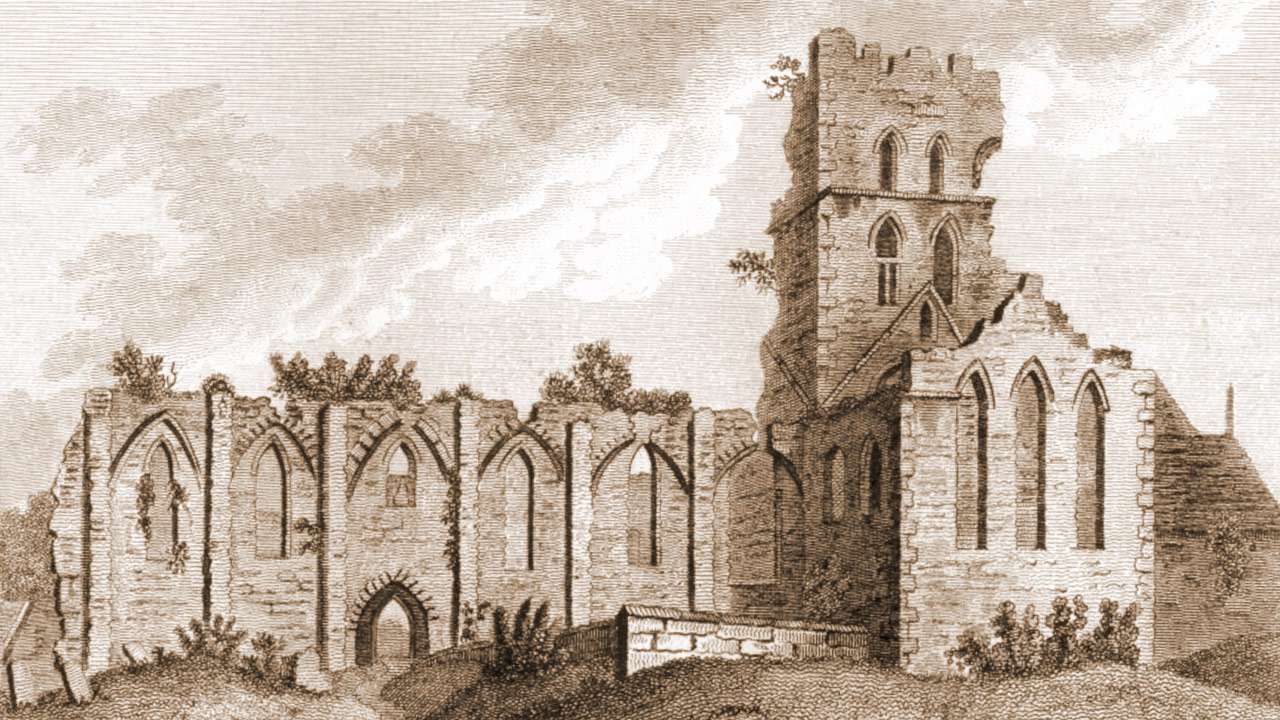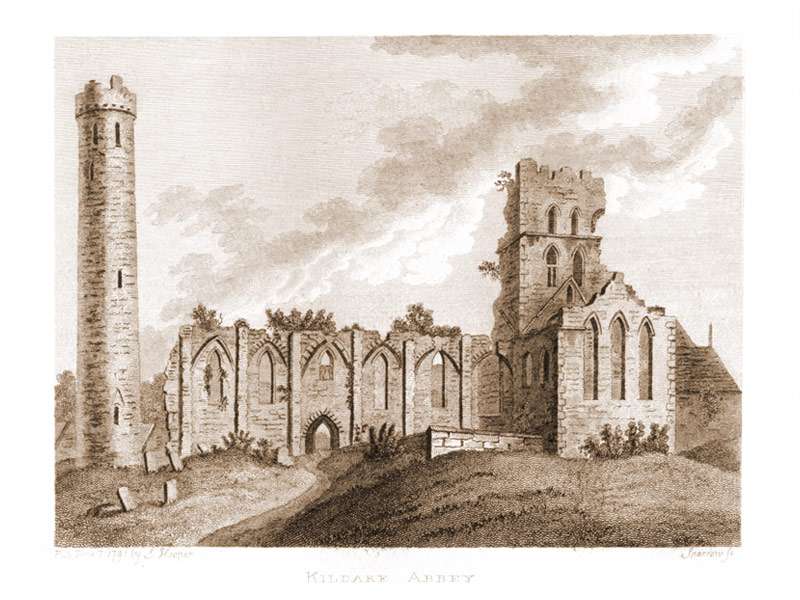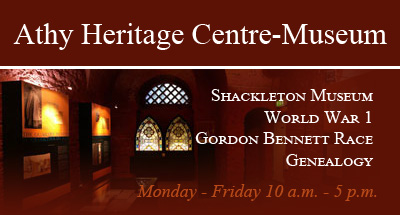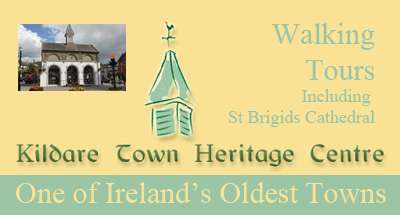PART of the tower of this church still remains, and a portion of the walls, which show it to have been well constructed. The round tower adjoining it is a beautiful object. We see here six Gothic arches and as many buttresses. The north side of the steeple is leveled with the ground, said to have been beaten down by a battery planted against it in the rebellion 1641. The south wing is in ruins, it was formerly a chapel, and in it are two statues in alto relievo. One represents a bishop in his robes, a pastoral staff in his right hand, and a mitre on his head, supported by two monkeys. As there is no inscription, it is conjectured to belong to Edmund Lane, Bishop of Kildare, who was buried here A. D. 1522. The other is a monument of Sir Maurice Fitz Gerald of Lackugh, curiously cut in armour, with an inscription and five escutcheous differently emblazoned. e history refers to Grey Abbey at Kildare.
THE round tower is 132 feet high, adorned with a battlement, and not far from this is the fire-house. Henry de Loundres, Archbishop of Dublin in 1220, put out the fire, but it was re-lighted after, and continued to burn till the suppression of monasteries. One miracle attendant on this fire was, that notwithstanding its perpetual consumption of fuel, ashes never increased: nor was the fire ever to be blown by human breath for fear of contamination, but by vans or bellows.
(pp. 25-26, Vol. I)
It seems to confuse Grey Abbey with Kildare Cathedral. The
accompanying image and description is of the Cathedral but the early
part of the history refers to Grey Abbey at Kildare.





